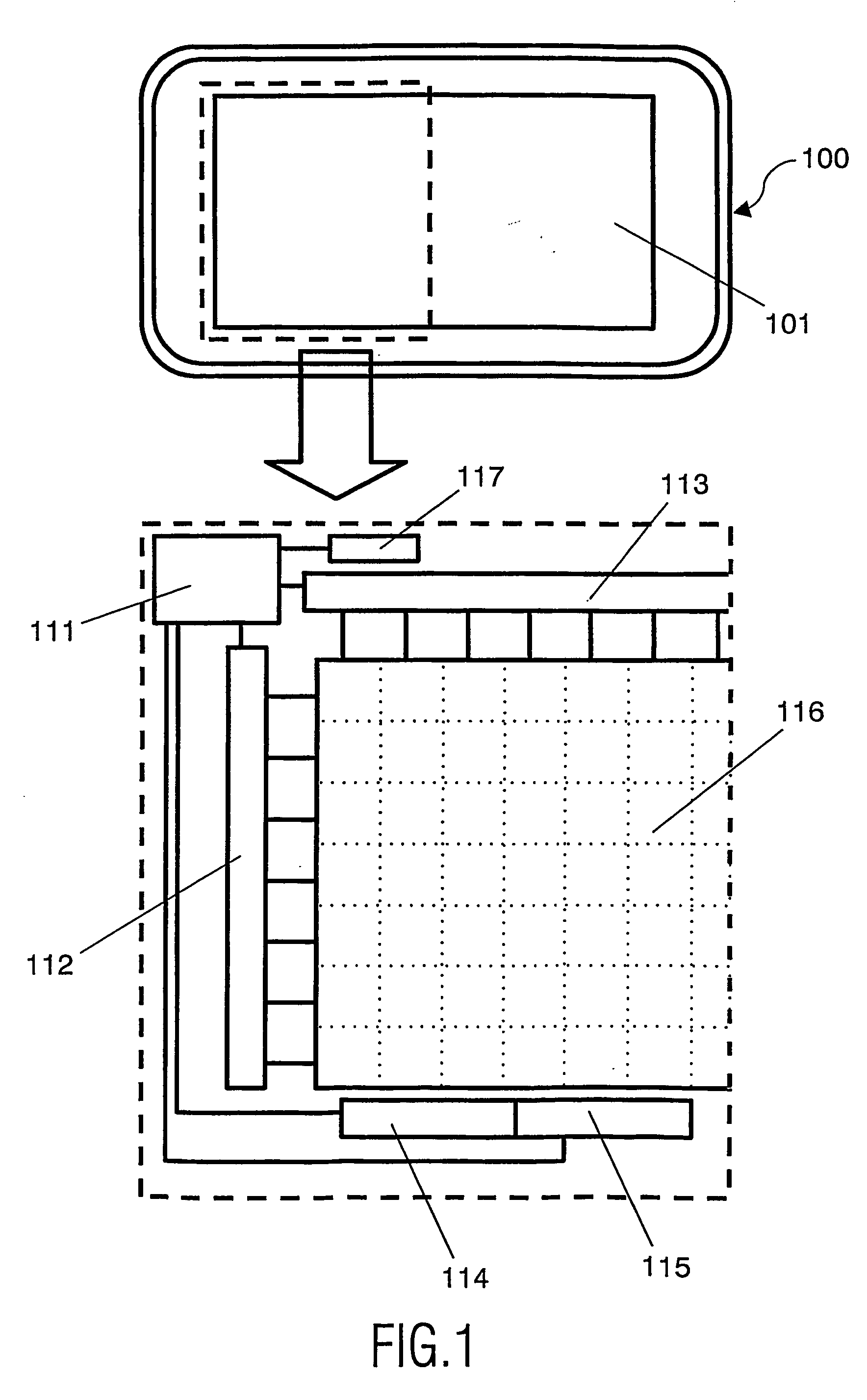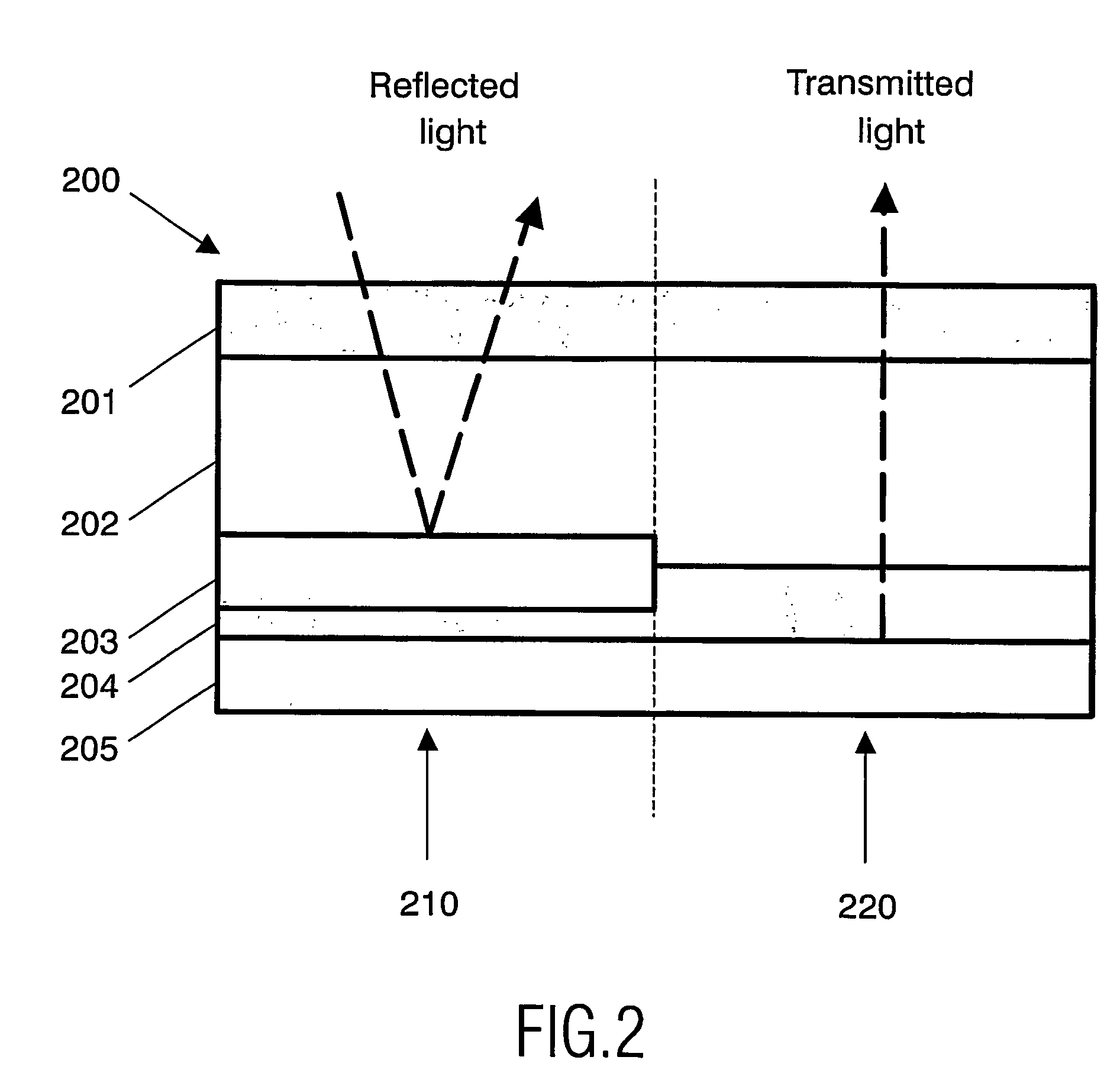Transflective liquid crystal display with reduced flicker
a liquid crystal display and transflective technology, applied in the direction of instruments, computing, electric digital data processing, etc., can solve the problem that the measurement will only be valid, and achieve the effect of reducing flicker, facilitating dynamic use of backlight, and substantially reducing power consumption
- Summary
- Abstract
- Description
- Claims
- Application Information
AI Technical Summary
Benefits of technology
Problems solved by technology
Method used
Image
Examples
Embodiment Construction
[0042] One preferred embodiment of the present invention is schematically illustrated in FIG. 1, where a transflective display device 100, and an enlarged portion of its display 101 is depicted. The display comprises a web or matrix of transflective pixels, 116, each comprising a transflective sub-pixel and a reflective sub-pixel, which are controlled by electrical circuitry 111 and driven by driver circuitry 112, 113. The driver circuitry 112, 113 comprises a data driver 113 and a row driver 112. The display device 100 further comprises first and second measuring elements, 114, 115. The first measuring element 114 is arranged to output a signal indicative of the internal voltage in the transmissive sub-pixels, the second measuring element 115 is arranged to output a signal indicative of the internal voltage in the reflective sub-pixels. The display device 100 furthermore comprises sensor means 117 for sensing the intensity of ambient light. In an alternative embodiment, in which th...
PUM
 Login to View More
Login to View More Abstract
Description
Claims
Application Information
 Login to View More
Login to View More - R&D
- Intellectual Property
- Life Sciences
- Materials
- Tech Scout
- Unparalleled Data Quality
- Higher Quality Content
- 60% Fewer Hallucinations
Browse by: Latest US Patents, China's latest patents, Technical Efficacy Thesaurus, Application Domain, Technology Topic, Popular Technical Reports.
© 2025 PatSnap. All rights reserved.Legal|Privacy policy|Modern Slavery Act Transparency Statement|Sitemap|About US| Contact US: help@patsnap.com



